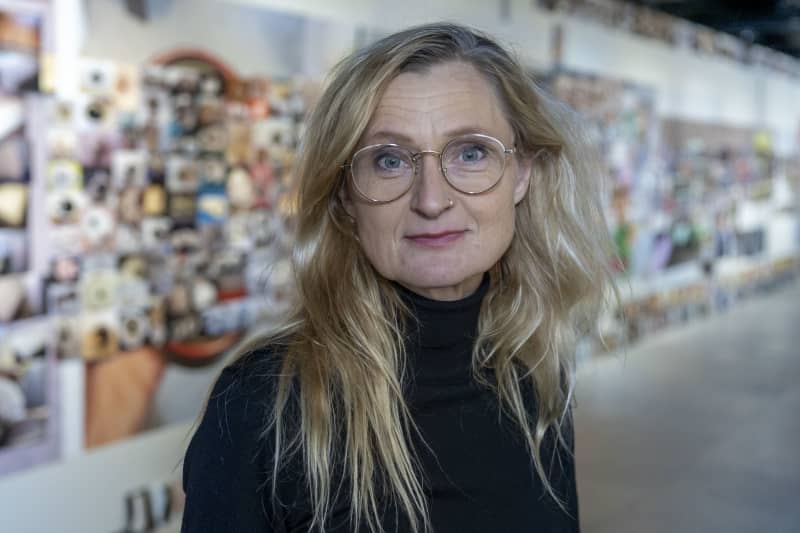US artist Penelope Umbrico uses photographs of sales ads taken by others in her work, which surprisingly reveal a lot about the society around her.
Social media is constantly flooded with photos of everyday life and the celebrations. There, images are controlled, processed and selected moments of people’s lives.
But the internet is also full of those unadorned photos.
A blurry picture of a porcine cat for sale on the front page of an online flea market is not aesthetically pleasing. The picture is not meant to be beautiful. Its purpose is to sell the product it depicts.
According to Umbrico, for sellers, pictures are just a tool to present a valuable item. He thinks differently.
To them, they are trash pictures. But I care about the image. Because in pictures that people don’t care about, they actually reveal something about humanity, the artist says.
Umbrico collects photos of consumer-to-consumer sales announcements found online. The exhibition compiled from these pictures is on display at the Finnish Museum of Photographic Art K1 in Helsinki, Kämp Gallery. The artist himself has not taken any photos for the exhibition.
Everyday life fascinates us
Sales announcements may unintentionally reveal a lot about one’s own life and home. At the same time, they tell about the surrounding world.
– How children and pets run around when the television is filmed for a sales advertisement and how the television reflects the surrounding apartment, it reveals a huge picture of society.
You can look at the works as a whole from a distance or look at the details up close. The collection of television screens may seem dark at first, but upon closer inspection, the pictures are even amusing. Kas, when you could only take a picture of the Slavic squat from the television placed on the floor.
Screens and light as the main themes of the exhibition
Rastenbergen reflects on the impact of the internet on changes in privacy. Other people’s daily lives have become closer than ever with the help of screens on various devices. The boundary between private and public space has changed radically, when photos uploaded to the internet make private spaces public.
– In principle, the everyday life of even complete strangers is more accessible to us than ever before, Rastenbergen reflects.
According to artist Umbrico, one of the themes of the exhibition is people’s relationship with screens: How screens bring images before our eyes and how they reflect different lights.
– It starts with the idea that sunlight and screen light are different. And when we see the sun from the screen, we are actually seeing the light from the screen and not the light from the sun, says Umbrico.
The idea is put into practice as soon as you arrive at the exhibition, when the TV screen shows glimpses of photographs taken of the sun.
From rubbish to art
Umbrico is interested in the whole that similar photographs form.
– Not all pictures look good on their own. They are not interesting on their own, but when you put them together, you see a pattern. And society is built on formulas, Umbrico reflects.
A single image gives a different impression when combined with hundreds of images taken of the same object.
– Suddenly they become sculptural, almost like picture collages like a wall painting. And they turn into works of art in themselves, says Anna-Kaisa Rastenbergen.
According to him, the images also reflect our consumer culture. They tell about what is perceived as valuable enough to sell on.
Sales notes lack control
In social media, pictures are liked and commented on. This leads to the photographer appreciating the photos he takes. According to Anna-Kaisa Rastenbergen, this is not the case on buying and selling websites.
– There, people can share pictures without someone controlling the subject of the picture, whether the picture is good, whether it is valuable, that it is worth sharing.
Previously, the artist collected images from advertising catalogs and company advertisements, later the images of products sold by people themselves started to interest him more.
– Advertisements tell us what we want to consume. But it is much more interesting to see how consumers describe objects that they find meaningful and valuable. It became a humanistic project for me, says Umbrico.
“Pictures are not taken, they are taken”
Umbrico has considered the ethics and problems related to the use of photos taken by others. According to him, the law allows the use of images in art, because he uses them in a different way than what they are intended for.
– It’s interesting that the term taking a picture tells about permissible behavior. You don’t make a photo, you take a photo. In other words, photography is all about ownership.
Although there are glimpses of people in the pictures of the exhibition, they are neither in the main role nor recognizable.
– I don’t want individuals to be present, even though an individual is present in every picture, Umbrico reflects.
Even if no one is visible in the pictures, there is still a person behind each picture. But in Umbrico’s art, the pictures and the people taking the pictures become part of a big mass, where individuals and individual pictures become blurred when they are part of a big whole.

